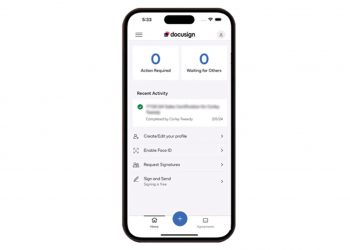By Debra Allen
RISMEDIA, Nov. 27, 2007-Real Estate professionals who adapt to the increase of cultural diversity in the market and who wisely plan to meet the needs of local multicultural and international clients gain a competitive edge and may increase business.
Expanded awareness of diversity may increase home ownership for underserved and immigrant communities, particularly Hispanic-Americans, Asian-Americans, and African-Americans. Through education and outreach, real estate professionals may help to overcome the barriers to ownership for minority communities. Real estate professionals also may provide useful tools and resources such as education and home-buying seminars.
Right now, real estate professionals must improve communication skills with multicultural customers to better understand key demographics and traits of multicultural communities. Separately, training for real estate professionals may include escrow and lending procedures for international clients as well as TRC Certification (Trans National Referral Certification), a certification that costs as little as $99, a one-time fee to NAR.
In 2006, first-time home buyers accounted for 3.23 million home sales. Marketing and selling practices may need to incorporate diversity and serve local, multicultural and international clients.
Real estate professionals need to be both aware of, and sensitive to, cultural differences within marketing and selling practices. Real estate professionals must consistently honor practices that make clients feel comfortable, informed, and valued. They must also identify the professional skills needed for a successful international practice.
According to a National Housing Report released in 2004 by Harvard University, “Immigrant minorities accounted for 27 percent of households in 2003, and will contribute at least two-thirds of net household growth in the coming decades.”
Further, by the year 2030, one out of four people will be of either Hispanic or Asian descent.
Baby Boomers have record income levels that expand their exposure to international markets. Unlike previous generations, they are not downsizing with regard to their homes, but are buying amenity-filled homes. In fact, they are driving a strong demand for second homes – not just in the U.S. – but abroad.
The obvious benefit for creating an international network is global exposure for any and all properties in a given market area.
According to the 2002 U.S. Census Bureau:
The Hispanic community is the fastest growing demographic group in the U.S. currently. During the 1990s, the overall population increase was 12.6%, while the nation’s Hispanic population grew 47%. Home ownership for Hispanic-Americans reached a new high of 46% in 2004.
The Asian-American population is expected to triple from 10.7 million in 2003 to 33.4 million by 2050. The 2002 median income of Asian households was $52,018 compared to $42,409 for all households. Asian and Pacific Islanders have the highest proportion of college graduates, with 47% of people over age 25 holding a bachelor’s degree or higher.
By the year 2030, one out of four people will be either Hispanic or Asian in ethnic makeup. Multicultural marketing recognizes a diverse market base, including ethnic and racial minorities.
Following are some tips when using a multicultural marketing approach:
– Learn as much as possible about the traditions and beliefs of your targeted potential clients.
– Do not assume that all minorities are alike. There is considerable diversity within each ethnic segment based on country of origin, language, and social and cultural adaptation to the United States.
Things to look out for when working with multicultural clients:
– Be careful when translating English into foreign languages. Some idiomatic expressions cannot be translated word for word and retain the same meaning.
– Build a group of real estate professionals who speak the language of the ethnic group or groups that you seek to serve.
– Be sensitive about cultural slurs, stereotypes, clichés, and taboos. Understand the nuances in communication, dress, and family values.
– Be prepared to educate your audience.
– Get involved with ethnic communities and their events.
– Consider hiring a specialty advertising agency or marketing consultant to make the communities aware of any special services.
Basics for Multicultural Business Norms and Etiquette:
– Learn at least a few phrases of the other’s language.
– Show appreciation for the other’s customs, music, and art; do not criticize them.
– Be sensitive and nonjudgmental on politics and religion; avoid discussing these topics if possible.
– Build on the other’s cultural heritage to enhance communication, rather than trying to impose your own.
– Extend respect to whomever the customer cares about: the elderly, children, family, the poor, and with whatever the customer identifies, such as religion.
– Acknowledge mistakes and apologize when appropriate.
– Talk less, listen more.
– Do not ask about family unless they are present or the client mentions them first.
– Recognize the need for formality and take more time in doing business than is your normal practice.
– Be punctual, even if it is not customary for the person you are visiting. Many cultures regard lateness as a character flaw.
– Take the blame for language difficulties.
– Do not tell or make jokes; they have a high probability of being misunderstood.
– Show deference to the elderly; stand when they enter, wait for them to speak or extend their hands in greeting.
– Be patient and forgiving if a member of the opposite sex has trouble determining how to treat you. Remember that other cultures differ on the roles of men and women in business relationships and may have difficulty adjusting to expectations in the United States.
– Skip the efforts to create an instant friendship.
Most would agree that we are in a buyer’s market, but many sales people are overlooking two of the fastest-growing demographics: immigrants, and Hispanics.
Immigrants represent 40% of new household formations from 2000 to 2005. In the 25-34 age group, 20% of the population is currently foreign born. 14% of current buyer’s are immigrants; they average a larger down payment of seven percent vs. the four percent down by native-born Americans. The Hispanic purchasing power is projected to equal the third largest economy in the hemisphere by 2010, of how 72% are U.S. citizens.
In good times and tough times, some principles hold true-you must build your business in a systematic way and stay competitive and always two steps ahead of everyone else.
Debra Allen is a Realtor with Prudential Arizona Properties, Gilbert, Ariz. To contact her, e-mail DEBRA.ALLEN@PRUAZ.COM.









